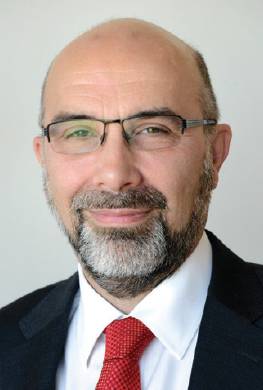Continuing Professional Development
Applying reflexivity to legal practice
Dr David Cliff describes how and why reflexive practice is becoming essential for legal professionals to ‘contemporise their work … with a knowledge of self and its impact’.
 About the author: Dr David Cliff is founder of Gedanken, a leading-edge executive and business coaching organisation.
About the author: Dr David Cliff is founder of Gedanken, a leading-edge executive and business coaching organisation.
We do not live in a codified world of law. Indeed, in a world of postmodernism, where the group unit has been described by some as consisting of a single person, the simple approach to the interpretation of law - and the practice that supports it - is unsustainable. The ever-increasing social, technical and increasingly environmental complexities citizens face precludes this.
Whilst the law has always had the flexibility of applying various forms of relativism to it (if only for purposes of mitigation). Modern times, however, generate challenging environments for the individual practitioner to work between the application of the rule of law, the institutions, practice and procedural requirements that sustain it, and an increasing number of imponderables that impact upon human beings in an ever more diverse, changing world.
Reflexivity in legal practice
Now more than ever, the practice of reflexivity in legal practice has become essential. Its origins come from social research methods. Popularly, people have heard of the ‘Hawthorne effect’, ie, the fact that the presence of the observer can materially affect the outcome of that which is being researched. This relatively simple insight belies a huge set of implications about the role and presence of lawyers in their practice as it impacts upon representing their clients across a myriad of potential causes. Contemporary practice is, therefore, improved by a deeper level of analysis that requires reflexivity at its heart.
Reflexivity occurs at a number of levels. We can talk about reflexivity in terms of the interpretation of the law itself. The very nature of interpreting safety legislation, voluntary codes and regulatory requirements often requires a level of interpretation that takes into account rapidly changing circumstances in the social world as well as evolving legal practice.
Moving beyond this to the practitioners own practice development, most people are familiar with the concept of reflection. Reflection, at its simplest level, is as literal as looking in a mirror and considering potential improvements. Take, for example, going to a special event: our clothes may not coordinate properly, or our hair may need straightening, etc. This corrective opportunity, at this level, allows for subtle improvements and the avoidance of mistakes in presentation. There are direct parallels to legal practice: What have we learned? What could we have done differently? What was our level of knowledge and was it adequate for the situation that was presented?
Keeping to the dressing in front of a mirror parallel, deeper reflection still takes the analysis of our physical reflection beyond simply appearance. What social conventions are involved in the way we dress? Are we going to a party or a wake? Are we attempting to make a social statement or blend in? These second-level reflections look at the presentation of self and its social impact.
Beyond this is a level of reflection that starts to begin to look at reflexive practice also. At this point, it is as if we have effectively stepped through our mirror and started to view ourselves from the perspective of the client, the court or some other body. In the clothing analogy, this ‘view’ might be: Has this person made an effort? or Are they competent and credible? The practice connotations are obvious - with the client/court/ other stakeholders’ experience of us in this process - what was the experience of quality, preparation, practice, adequacy of thought processes and argument, organisation and communication of competence?